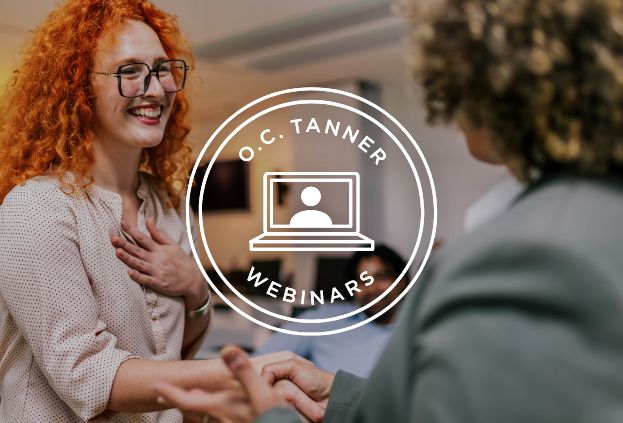4 Surprising Benefits of Peer-to-Peer Recognition Programs

Updated on
April 11, 2025
11
April
2025
When William James, known as the “Father of American psychology,” was a professor at Radcliffe College in 1896, his class sent him a potted azalea for Easter. In a letter thanking the students, James wrote one of his most famous lines:
“The deepest principle of human nature is the craving to be appreciated.”
Research has proven James correct: the thing that employees want most from their workplace is not a promotion, more perks, or even a larger salary—it’s to be recognized for their accomplishments.
In a study conducted by The Boston Consulting Group and The Network with over 200,000 participants, "appreciation for your work" was ranked as the number one factor for happiness on the job—good work-life balance was #3, learning and career development was #6, and an attractive fixed salary was #8. Even after adjusting for age and nationality, appreciation consistently ranked as the single most important job element for all participants. James was right: appreciation is a basic human need.
What is peer-to-peer recognition?
As more and more research continues to prove how right James was, employee recognition programs become increasingly common. However, many organizations rely on recognition to flow downwards, trusting leaders to see their employees’ great work and appreciate it. But when leaders are the only ones doling out appreciation, a lot of great work goes unnoticed.
Peer-to-peer recognition, on the other hand, is when employees recognize each other for their accomplishments. This recognition can be informal, with spontaneous, handwritten thank you cards, or formal, with an enterprise-wide, technology-based solution.
When you encourage peer-to-peer recognition, everyone's eyes become open to the good work all around them. Recognition starts to flow in all directions, across departments and locations, even up and down the organizational chart. And when recognition flows freely, a transformation occurs: people give of themselves wholeheartedly, cheerfully, and freely.
But why?
What is it about peer-to-peer recognition that causes this cultural transformation?
Why is peer-to-peer recognition important?
When employees share recognition, they are doing trade in the currency of gratitude. For centuries, scholars across disciplines have considered the importance of gratitude. The Roman philosopher Cicero said, “Gratitude is not only the greatest of virtues, but the parent of all others.”
Peer-to-peer recognition creates an atmosphere of gratitude that strengthens your organization in multiple ways. Research has shown that regular expressions of gratitude benefit both the giver and the recipient. Not only will employees see individual benefits as they regularly thank each other, but the organization as a whole will find surprising benefits.
Here are four reasons why creating a culture of gratitude and appreciation is important, especially among peers:
1. Positive emotions increase
In psychology, gratitude is so regularly associated with happiness, it may be the key element to living a happy life. Grateful people tend to report higher levels of satisfaction with life, greater optimism, and more connections with people.
So, it makes sense that one of the simplest ways for employees to be happy at work is for them to be able to give thanks to each other. In fact, research suggests that employees experience greater job satisfaction “through belonging to a work-place culture that endorses gratitude.”
With a peer-to-peer recognition program in place, employees become more engaged. They start to see how their position affects the work of others, on both their team and other teams. In the long run, peer-to-peer recognition can even help reduce employee turnover, as 75% of employees say that giving recognition makes them want to stay at their current organization longer.
2. Wellbeing improves
Not only does giving recognition regularly increase your happiness, it can also increase your health. Grateful people tend to report feeling less stress and sleeping better. One study found that grateful individuals have better physical health (due to their increased psychological health), tendency towards healthy activities, and readiness to get help for health issues.
With peer-to-peer recognition taking place, you may find that employees are more productive, taking fewer sick days and managing deadlines better. You might even see increased engagement with your company wellbeing program!
3. Relationships strengthen and grow
Peer-to-peer recognition encourages employees to make deep, personal connections with their team members. This is because gratitude uses a process called “find-remind-bind” that helps create and strengthen our most important relationships. When we regularly recognize our peers, we find new relationships or remind ourselves of existing ones, serving to bind the relationship more closely together.
In our 2020 Global Culture Report, we found that peer-to-peer recognition increases the probability of a constructive team culture by 2.5x. Not only that, but peer-to-peer recognition also strengthens the connection between employees and increases psychological safety. Teams become more cooperative, rather than competitive, when they are able to recognize each other and don’t have to rely on recognition to come from the top down.
4. Employees, and organizations, thrive
Gratitude has been found to stimulate pro-social behavior: those altruistic social behaviors that benefit other people, such as helping, sharing, donating, and volunteering. When people experience gratitude more often, they are more likely to experience pro-social behaviors. As employees recognize each other more and more often, they will start to experience these behaviors as well. They will become more inclined to help one another out on difficult projects, to share their office supplies, and to give to the community. This can lead to a wonderful cycle of positivity: the more grateful employees feel, the more likely they are to act pro-socially towards their colleagues, which causes them to feel grateful, and on and on as your culture benefits.
What does peer-to-peer recognition look like?
Peer-to-peer recognition doesn’t come easily to everyone. Individuals may need to be coached on how to give recognition and what it looks like. For some people, sharing their thanks with others comes easy—consider assigning these people as “Recognition Champions” to help model what great recognition looks like. They can help establish these 4 recognition best practices for your peer-to-peer program:
Timely
Great recognizers make it a priority to share appreciation, and they to do it as soon as possible. Recognition in the moment is powerful, as it shows that you’re paying attention and you care. While Gallup recommends that recognition be given every 7 days, we recommend that every week each employee should be giving, receiving, or observing recognition.
Genuine
Part of the reason that we don’t recommend weekly scheduled recognition is because it shouldn’t become a chore or transactional. Appreciation is authentically earned and authentically given, not just something to be crossed off a to do list. Real gratitude makes it easy to speak sincerely about how that person contributed. And by making it personal, maybe by including a gift card to their favorite restaurant, your relationship is strengthened even more.
Specific
A note of appreciation doesn’t have to be complicated. A note that says, “Great job on that project!” will always put a smile on someone’s face, but they’ll be smiling for days when you add, “You came up with an out-of-the-box solution that solved a huge headache for the team. Your creativity and willingness to jump in always impress me. Thanks for helping out!”
Take the time to connect their success with why it matters to you, the team, and the organization. These specifics will make your gratitude even more impactful.
Public
For some people, just knowing that one person saw that you did something great is enough—but not for most people. Shining a spotlight on other people’s accomplishments has multiple benefits. It turns the recognition moment into a heartfelt experience of gratitude. It helps leaders become more aware of the great work that they don’t see every day. It gives others a chance to heap on their own praise in the moment and see how that person is contributing. And it’s inspiring: observers see what your organization values and want to do the same.
Conclusion
The days when leaders were the only ones doling out recognition should be in the past. A peer-to-peer recognition program that focuses on timely, genuine, specific, and public appreciation will encourage employees to be healthy, helpful and happy.
When peer-to-peer recognition is an established part of your company culture, there are more opportunities for your employees to recognize and thank each other. And that leads to so many benefits. There are individual benefits, such as better life and job satisfaction, lower stress, and a deeper connection to those around you. There are organizational benefits, such as greater employee retention, higher employee engagement, and building camaraderie.
By spreading gratitude throughout your organization, you build a culture where empathy, openness, and happiness thrive—and where resentment, hostility, and aggression wither. And that sounds like an organization where anyone would want to work.
More Employee Recognition Resources
There are so many different ways to recognize, appreciate, and celebrate your employees. Here are more resources for guidance:
• Guide to Employee Recognition Programs
• 11 Employee Recognition Ideas
• 22 Awesome Employee Recognition Gift Ideas
• 9 Tips for How to Choose Employee Recognition Software
• Heartfelt Employee Appreciation Quotes to Say "Thank You"
• Benefits of Peer to Peer Recognition
• Best Practices for Virtual Employee Recognition
• Guide to Years of Service Awards
• Tips to Celebrate Work Anniversaries
• Employee Recognition in the Modern Workplace
• Culture Cloud: Modern Recognition Software



